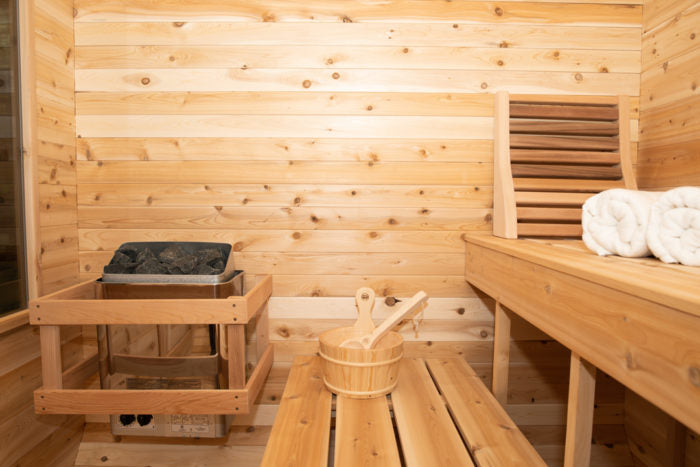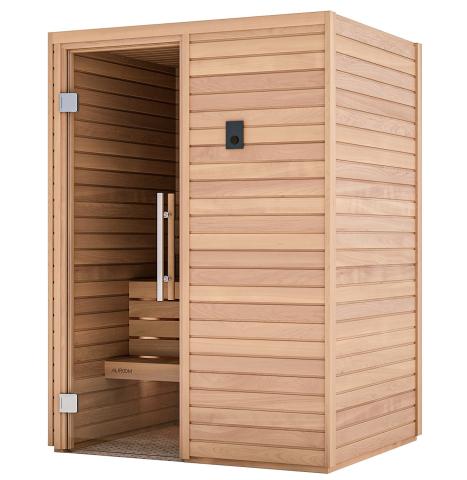The Basic Principles Of Traditional Sauna
Wiki Article
Excitement About Traditional Sauna
Table of ContentsAll about Traditional SaunaTraditional Sauna Things To Know Before You Get ThisThe 9-Minute Rule for Traditional SaunaHow Traditional Sauna can Save You Time, Stress, and Money.
Many of the weight lost in a sauna is water loss and is re-gained upon rehydrating. Without a doubt sauna can be an important part of a healthy weight loss program. To look at the distinctions in between standard and IR saunas, I will separate these right into verifiable, theoretical, and produced distinctions.Therefore, the best factor in the saunawhich goes to the ceiling straight above the sauna heateris normally in between 185 and 190 F. Traditional Sauna. Claims that a standard sauna exceeds 200 F is merely not real and not applicable for electrical saunas sold in the US. The temperature level for a far-infrared sauna is normally set in between 120 and 140 F; however, unlike the conventional sauna, the goal in and IR room is not to accomplish a high temperature level
Because of this, the temperature level difference is nearly unnecessary, given that excessive sweating causes both sauna kinds, yet the approach of warming the body is different. In an IR sauna the bather will certainly feel hot and will certainly sweat profusely, however at much reduced temperatures. Hence, if the objective is to spend longer amount of times in the sauna, the IR sauna is an excellent option.

A Biased View of Traditional Sauna
When the high temperature is accomplished, the elements cycle on and off to maintain the high temperature. The majority of conventional sauna users take pleasure in putting water over the rocks to produce heavy steam to increase sauna moisture degrees. The advantages of putting water over the rocks include: making the space a lot more comfy, moistening the nasal passages, and enabling the usage of aromatherapy by blending necessary oils with the water.In a far-infrared sauna, the warm front penetrate the body to properly warm the body and increase the body core temperature level. To achieve this boosted temperature level, Far-infrared emitters produce infrared power which is close to the very same wavelength as that which the body normally emitsoften described as the "Important Range" of 7 to 14 microns), so the energy is well obtained by the body.
When the power gets in the body, it creates the body temperature to boost and ultimately results in sweat. In an infrared sauna it is necessary for the emitters/heaters to continue to be on virtually continuously. Considering that there is no mass of rocks to maintain warm, the sauna will cool down if the emitters shut down.
As mentioned over, the sauna bather in an infrared link area intends to position himself before running emitters to obtain maximum take advantage of the heat. The home heating time for both rooms can be extremely different, depending upon just how the areas are used. For a conventional sauna, a bather should permit 30-40 mins for the room to attain a desired temperature level and to correctly pre-heat the rocks.
The Buzz on Traditional Sauna
A well constructed sauna will commonly attain a temperature of 150-160 F in concerning 30-40 mins. For hotter temperatures, the space may require to warm for a longer duration.To some, 15 minutes was "squandered" while the infrared power warmed the wood panels as opposed to warming a body, while others discover a pre-heated area to be more comfy and believe a raised beginning temperature is essential to start perspiring. The size of advised usage for each and every space is roughly the exact same (10-15 minutes per session); nonetheless, because of the reduced air temperatures and the capability to really feel the effects of infrared warm much faster than a conventional sauna, it is not unusual for a person to spend a total of 20-30 mins in an infrared sauna.
Typical saunas tend to be bigger (thus make use of more electrical power) than infrared saunas, although standard saunas are absolutely available in one and two individual sizes. For a two-person typical sauna, 5x6 or 5x7 size is most preferred. The top bench can conveniently seat two or 3 individuals and is also long enough to relax throughout the sauna session.


The average cost per kWH of electrical energy in the united state is around $0.11, so a 4.5 kW heater will certainly cost approximately $.50 to run for one hour, if the heating unit runs continuously for one hour. Generally a sauna heating system will certainly compete 75% of the initial hour and 50% of succeeding hours on given that the components cycle once the set temperature level is achieved.
The Ultimate Guide To Traditional Sauna
A 2 person far-infrared room is normally physically smaller than a typical sauna, usually regarding 4' x 4' or smaller. The IR furnace is commonly 1.5-1.7 kW utilizing a 120 volt 15 amp plug-in solution. Given that the space can be utilized sooner than a sauna area, we will certainly assume the area is made use of for to of an hour including warm up time.Finally, there is a rarely reviewed difference in the social experience between the 2 areas. While our culture has shed go now several of the social benefit of the typical sauna experience, it can be very socially satisfying. From family time in the sauna, to heart-felt discussions with loved ones, to sauna partiesthe conventional sauna experience can cause intimate socializing.
Many higher end infrared areas include colored light therapy, audio browse around this web-site systems and full-glass fronts.
Report this wiki page